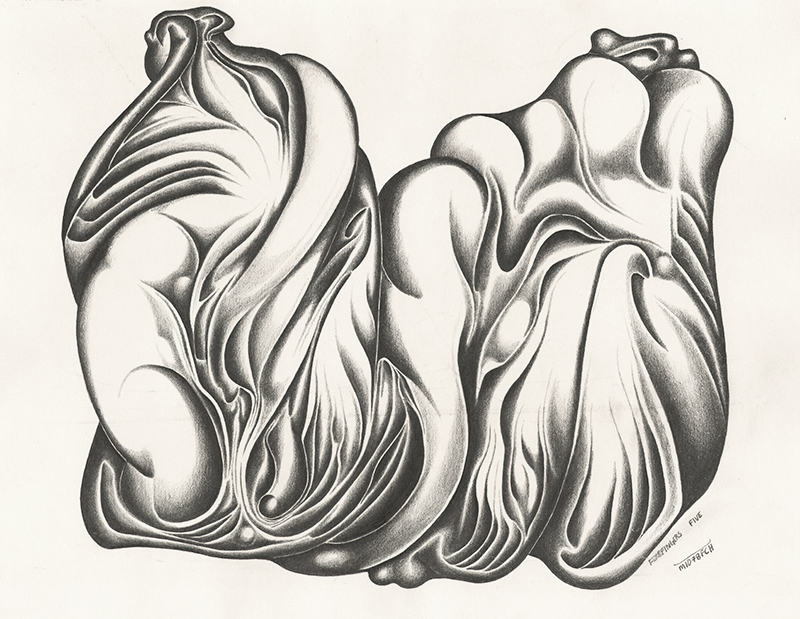
19th, 20th & 21st Century Fine Prints
707-546-7352 · fax 707-546-7924 · web: www.annexgalleries.com · email: artannex@aol.com
Fourfingers Five by Francis Henry Critchley Hinder

Fourfingers Five
Francis Henry Critchley Hinder
Fourfingers Five
Francis Henry Critchley Hinder
1906 - 1992 (biography)Painter, printmaker, and designer Frank Hinder's later work exhibited more Surrealism than the Cubist and Futurist styles he employed in the 1930s when his career began. In "Fourfingers Five," he depicts shapes that could be construed as figures wrapped in blankets or two hands draped in a thin, silky cloth. The common thread of his work is still evident in the smooth tonality he employed to create shapes and shadows, the same as seen his early, more fractal work. "Fourfingers Five" also demonstrates his appreciation of graphite as a primary medium and not only as a preparatory one, obtaining nearly seamless gradation while also executing mechanical precision.
Francis (Frank) Henry Critchley Hinder was born in 1906 at the family home in Summer Home, New South Wales, Australia the fourth child of Dr. Henry Vincent Critchley Hinder and Enid Marguerite (née Pockley). He studied art with Dattilo Rubbo at the Royal Art Society of New South Wales between 1925-27 and, while travelling, studied drawing at the School of the Art Institute of Chicago in the U.S. as well the New York School of Fine and Applied Art and the Master Institute at the Roerich Museum where he met Modernist artist Emil Bisttram, with whom he then studied in Taos, New Mexico.
In the mid-1930s he worked as a commercial artist in the U.S. and taught at the Child-Walker School of Fine Art, Boston, Mass. In 1930 he married sculptor Margel Harris and both returned to Sydney in 1934, where he began working in theatre design, advertising and graphic art.
Working with William Dakin and the Sydney Camouflage Group, Hinder was seconded to the Camouflage Wing of the Royal Australian Engineers during WWII where he designed the Hinder Spider, a garnished conical frame for concealing a man, and dummy aircraft such as the Hindup.
After the war he took a teaching position at the East Sydney Technical College and then became head of the Art Department of (now part of the University of Sydney) from 1958 to 1964. In 1952 he was awarded the Blake Prize for Religious Art for his painting Flight into Egypt.
As an artist Hinder is best known for his abstract paintings, yet he also produced work across a diverse range of materials, including drawings and electric-light sculptures. He was a trustee of the Art Gallery of New South Wales and appointed as a Member of the Order of Australia. His work is held in many publics galleries including the Art Gallery of New South Wales.
Frank Hinder died in Sydney, Australia at the age of 86 in 1992.


